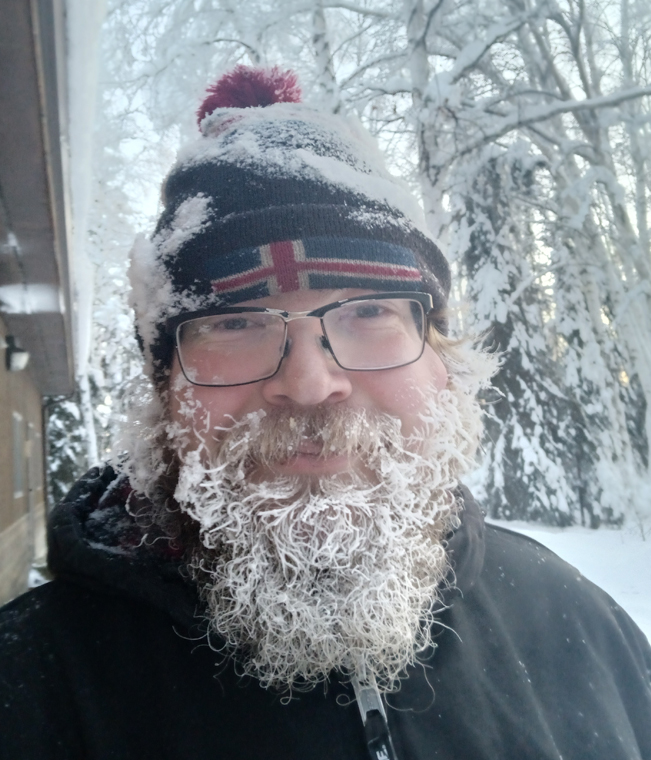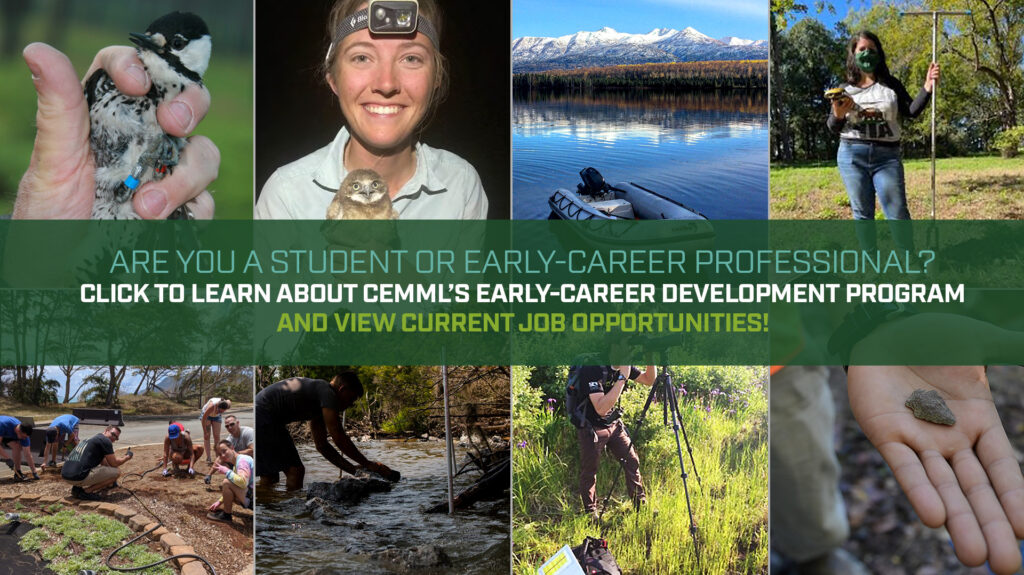BY JODI PETERSON
On any given day at Alaska’s Eielson Air Force Base, CEMML wildlife biologist Corey Clements might be out installing trail cameras to detect wolves and moose, trimming trees, putting up bat detectors, or helping mist-net swallows. “My daily work changes depending on what the Natural Resources office needs,” he said. “There’s only two other employees, so we all do a lot of different things.”

Clements is still fairly new to the job, which he started in December 2022. He grew up in central South Dakota and got a degree in Wildlife and Fishery Sciences at South Dakota State University. He never would have known that a career as a biologist on a military base was possible, he said, if he hadn’t come across CSU’s Center for Environmental Management of Military Lands.
After graduating, Clements said, “I jumped around in different jobs, trying to figure out what I wanted to do with this degree.” He worked for the U.S. Department of Agriculture in South Dakota, then went to Oregon to research invasive grasses in sagebrush steppe ecosystems. As a Forest Service contractor, he planted trees and sprayed pesticides in Kansas and Missouri. When that stint ended, Clements started perusing conservation job boards. He saw several internships in natural and cultural resource management being offered by CEMML, as part of a program started by Principal Investigator Jennie Anderson. So far, the program has placed 40 recent graduates and early-career professionals at various Air Force installations for months at a time, doing everything from archaeological studies to bird banding to fish surveys.
Clements found a position at Eielson, 30 miles south of Fairbanks, that called for his skill set. He applied and got the internship—“a big surprise,” he said, “because I’d been doing lower-level technician jobs and this was a higher-level job. I was really excited.” He packed his bags for Fairbanks, where he found a place to live, and commuted to the installation to help the Natural Resources office with various tasks—building fire rings, surveying for aquatic weeds, entering data. “I got a lot of support from both CEMML and the base staff as an intern,” he said.
After the seven-month internship ended, Clements did more work on invasive grasses back in Oregon. Then the Eielson wildlife biologist job opened up. “I started getting phone calls from my CEMML supervisor asking if I would come back to Eielson,” he said. He had a contract to finish, but when that ended, he saw that the position was still available. He applied and was selected; once again, he packed and headed north. “I’d like to stick with CEMML and this job as long as I possibly can,” Clements said. “I don’t think I ever would have come to Alaska without the CEMML internship. I had no idea that there were civilian jobs on military bases. It opened a whole new door for me.”
Looking for even more early-career employment opportunities?
Check out our “Students/Recent Grads” page for more job openings at various locations requiring only two years of experience or less!
 CEMML staff member, Corey Clements stands atop the tallest point on Eielson Air Force Base in Alaska. (Photo courtesy of Corey Clements)
CEMML staff member, Corey Clements stands atop the tallest point on Eielson Air Force Base in Alaska. (Photo courtesy of Corey Clements) 